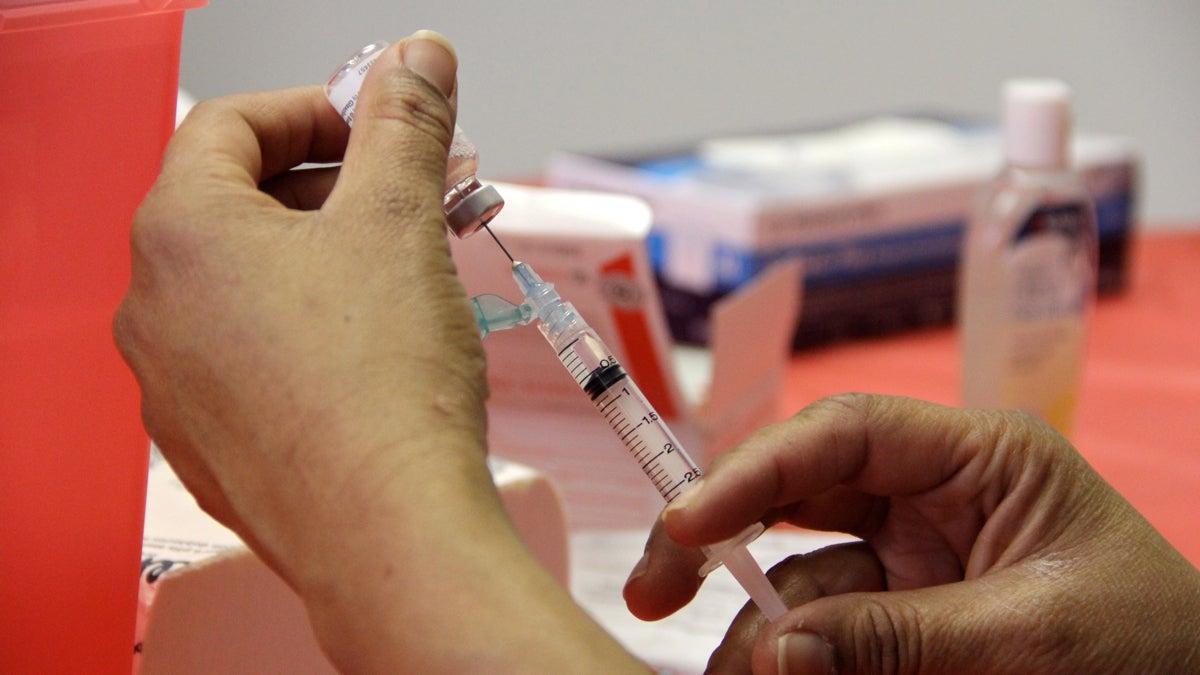Swarthmore team takes a shot at motivating college kids to get flu vaccine

(Emma Lee/for NewsWorks, file)
Economists at Swarthmore College are looking for ways to better motivate college students to get a flu shot.
Right now, only about one-third of Americans between 18 and 64 get a flu shot each year. Similarly, at Swarthmore College, just 25 percent to 30 percent of students get a vaccine in a “good year,” according to student services director Beth Kotarski.
The researchers designed four targeted emails, each with a slightly different health message. The emails went out to nearly 10,000 students at six small colleges around the Philadelphia region.
Some students got just the basics: information on where and how to get a flu shot. In the second batch of emails, students got the basics — and the message seemed to come from a classmate.
“An email that looked like it came from Joe Smith on my campus, and the first line would say: As a fellow Swarthmore College student I want you to know I think it’s a good idea to get a flu vaccine,” said assistant professor Erin Bronchetti.
She said early results from the study suggest that a peer-to-peer appeal — combined with an small financial incentive — could have ‘big impacts’ in pushing up the flu-vaccine rates.
“You could imagine having students post information about preventive health on Facebook, or something along those lines,” Bronchetti said.
A third group of students clicked open their email and heard an audio clip of a deep, hacking cough. In that case, the message was, “Imagine feeling like this during finals week.”
Behavioral economist Ellen Magenheim said the big problem with the flu shot is that the cost — in time or money — is immediate, but the benefit is often far off.
“Anything that brings the benefit forward and makes it more salient, we think, will help with this problem,” Magenheim said.
Researchers find ‘money talks’
Students who were promised as little as $10 were twice as likely to get a flu vaccination — a result that did not surprise Kotarski.
“Money does talk, and it’s something we have to think about that when we are planning our flu campaigns every fall,” she said.
Swarthmore used a similar strategy several years ago when college health officials wanted students to get the vaccine against the novel H1N1 virus. That year, anyone who was vaccinated had a chance to win a prize of dinner at a local favorite restaurant.
Magenheim studies why people sometimes act in ways that aren’t in their best interest — or why we often make a commitment and never follow through.
The economists are investigating the middle steps, the intermediary influences, that keep students from getting a vaccine — maybe students don’t understanding the need, perhaps they’re forgetfulness, or maybe procrastination gets in the ways.
“We were interested in all the stages. Did they open the email? Did they read the email? Did they intend to get a flu shot? If they intended to get a flu shot, did they follow through and get it?” she said.
She and Kotarski said they think quick access to the flu shot is also worth exploring. When someone says they intend to get a flu show, Magenheim said it would be nice to “close the time” between that intention and action.
In the past Swarthmore, and other universities have tried pop-up clinics. Instead of having students make the trek to a student health center, officials set up flu clinics just outside the dining hall or library.
WHYY is your source for fact-based, in-depth journalism and information. As a nonprofit organization, we rely on financial support from readers like you. Please give today.

